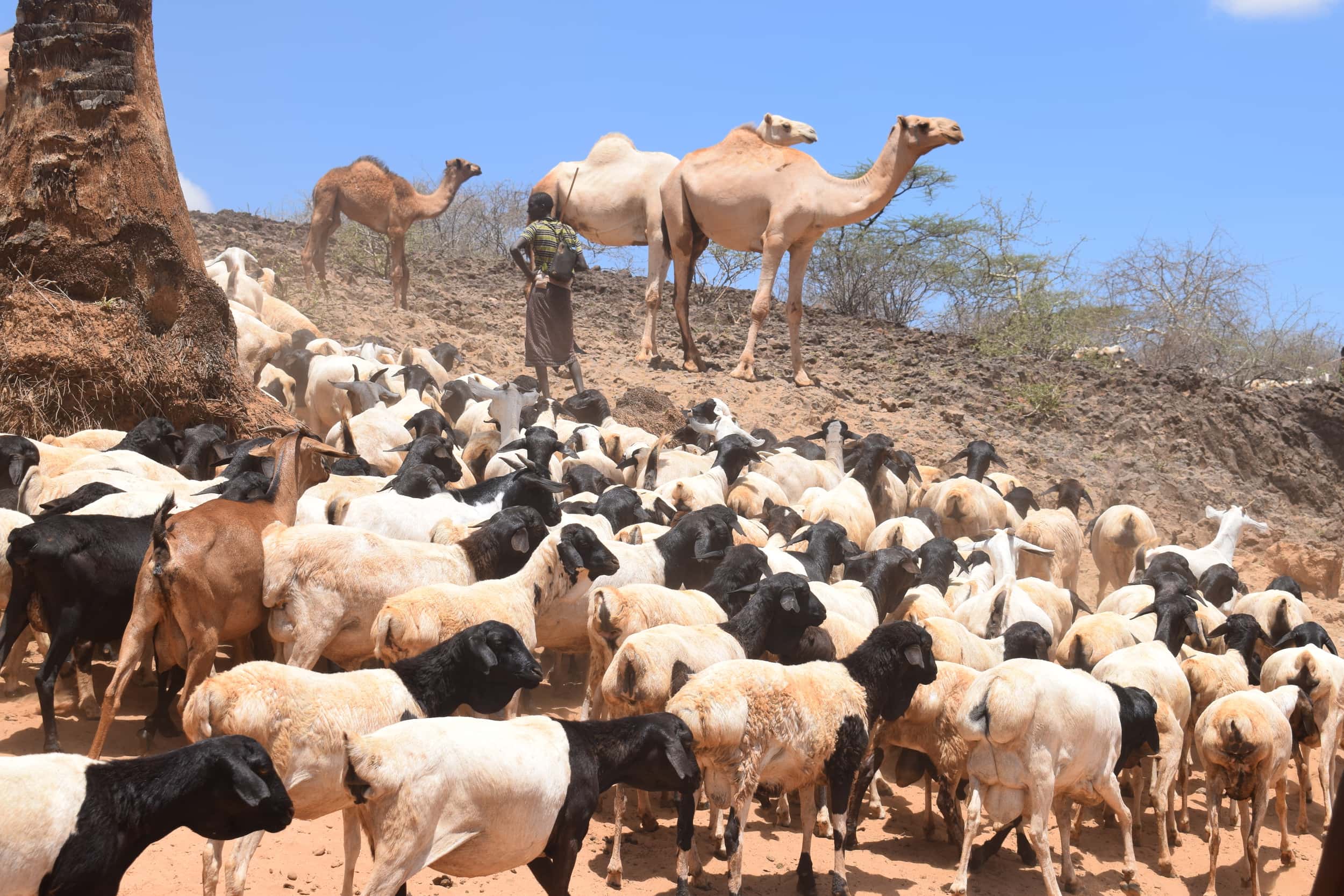Tracking the livestock sector for better climate change adaptation and mitigation in Kenya
- From
-
Published on
01.07.21
- Impact Area

Globally, countries are making pledges to reduce their greenhouse gas emissions as part of the Paris Agreement, and Kenya is among those that have submitted an updated Nationally Determined Contribution.
The country has set a target of reducing greenhouse gas emissions by 32% below a business-as-usual scenario by 2030 and has also committed to enhancing climate change adaptation.
Climate-smart agriculture is one such intervention, focusing on efficient livestock management systems to reach both adaptation and mitigation targets.
A recent online meeting discussed how the livestock sub-sector in Kenya can increase productivity and efficiency while enabling the country to meet its climate change targets.
Photo credit: A herder with his livestock in Isiolo County, Kenya. (ILRI/Dorine Odongo)
Related news
-

New CGIAR Evidence Sets Out Blueprint for a Low-Carbon, Regenerative and Equitable Food System Transition at COP30
Eisen Bernard Bernardo10.11.25-
Adaptation
-
Climate adaptation & mitigation
-
Mitigation
As countries prepare to gather in Belém for COP30, CGIAR today launched seven new evidence-based…
Read more -
-

Empowering women in business through improved chicken in Tanzanian
Eisen Bernard Bernardo07.11.25-
Adaptation
-
Climate adaptation & mitigation
-
Gender equality, youth & social inclusion
-
Poverty reduction, livelihoods & jobs
In the coastal villages of Tanzania's Lindi region, where the sun warms the earth year-round,…
Read more -
-

Can monitoring emissions unlock the finance smallholder farmers need to adopt sustainable practices?
The Alliance of Bioversity International and the International Center for Tropical Agriculture (CIAT)05.11.25-
Climate adaptation & mitigation
-
Nutrition, health & food security
Millions of farmers need billions of dollars to adapt to the fast-changing climate and extreme…
Read more -
